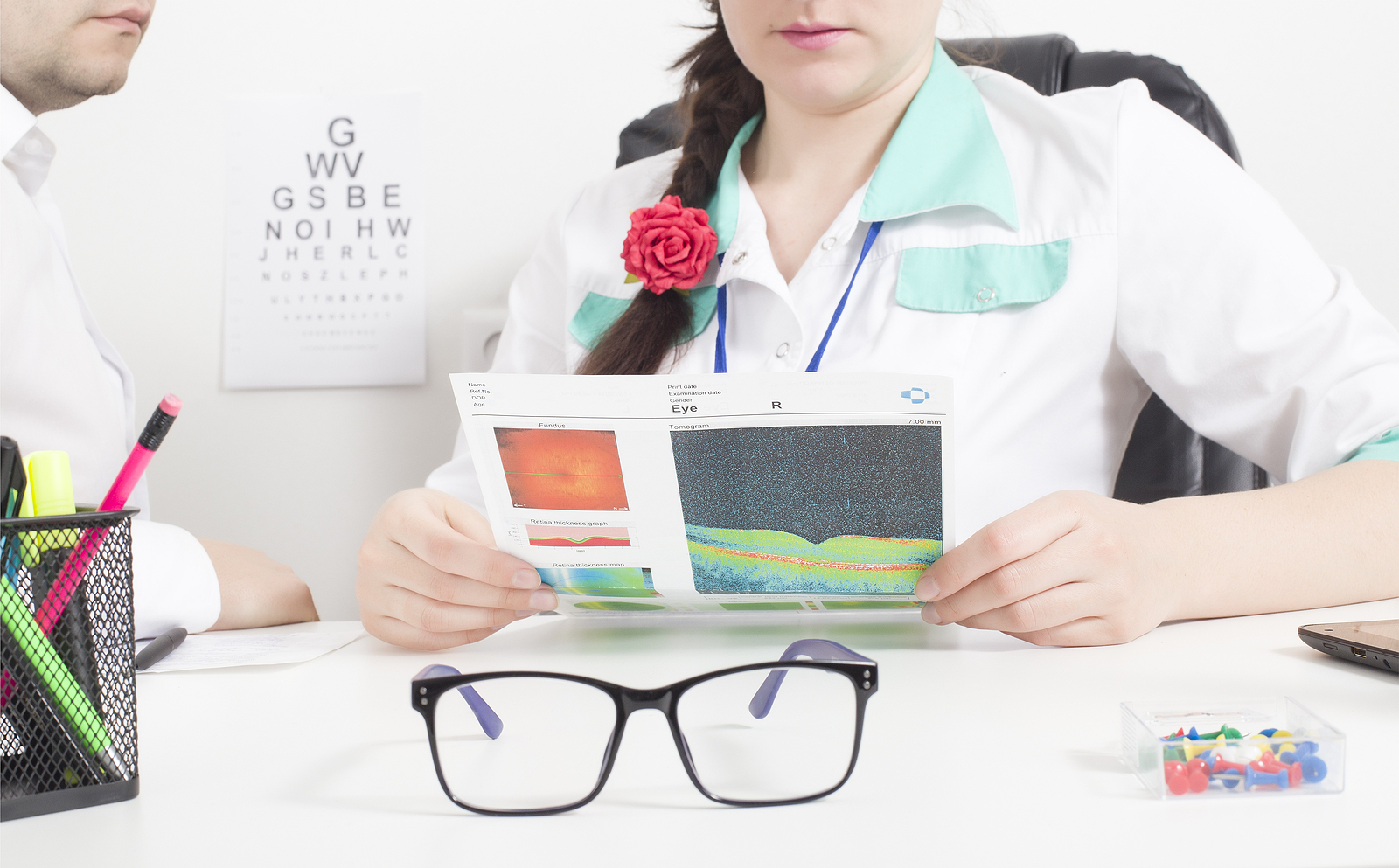Glaucoma – An Analysis of Return On Investment
In the United States, it is estimated that there are 3 million people living with glaucoma. Sadly, only about half know they have it. Routine eye exams have the potential to close this gap, but we need to see patients in our offices in order for this to happen. When patients do come in, there are many reasons for which they may become glaucoma suspects. No matter what the cause for suspicion, it is important that these patients be properly worked up and followed up with over the years.
The initial glaucoma work-up involves several key diagnostic procedures. In addition to a dilated fundus exam, it is good practice to do gonioscopy, fundus photography, optical coherence tomography (OCT) and visual field (VF) testing.
The quoted reimbursement figures below are current as of the time of writing, but are subject to change.
Dilated Fundus Exam
The dilated fundus exam should be done at the initial new patient visit, for the most thorough evaluation of overall eye health. For this visit, we could choose to bill an eye code, in this case 92004. Alternatively, we could bill a 99xxx code of our choosing. As of 2021, evaluation and management (E/M) coding is now based on the amount of time spent with the patient or by the complexity of medical decision making. With this in mind, Medicare reimbursement for this initial visit could range from $141.30-$210.66, depending on the code used.

Fundus Photography
The initial visit often ends up being a good time to take baseline photos of the optic nerve head. This additional test is not as time-consuming as OCT and VF. OCT and VF are often deferred to a later visit, when additional time can be specifically allotted to them. Fundus photos also cannot be done on the same day as OCT, so it makes sense to get them done upfront. Medicare reimbursement for CPT 92250 is $45.83. This is a bilateral code, meaning reimbursement is inclusive of both eyes.
Gonioscopy
Gonioscopy is often delayed to the follow-up visit, due to logistics. It is often not until after dilation that we make the determination that a patient is a glaucoma suspect; therefore, we defer gonioscopy to the follow-up visit, when it can be done undilated. CPT code 92020 is also bilateral, and is reimbursed at $27.
Optical Coherence Tomography
OCT is an important test to be done at baseline, and again annually, if not sooner. Medicare reimbursement for 92133 is $38.04, and is made up of a technical and professional component; these are $15.07 and $22.97 respectively. This is a bilateral code.
Visual Field
VF is also important to be done at baseline, and again once a year, if not more often. Medicare reimbursement for bilateral CPT 92083 is $65.23. The technical and professional components are $36.76 and $28.47 respectively.
 We usually end up seeing glaucoma suspects about three times the first year. The first visit is the time of diagnosis. The second visit encompasses the additional testing. The third visit is simply a pressure check. Depending on the complexity of the patient, and whether they remain a glaucoma suspect or convert to glaucoma, they may be seen 2-4 times a year thereafter.
We usually end up seeing glaucoma suspects about three times the first year. The first visit is the time of diagnosis. The second visit encompasses the additional testing. The third visit is simply a pressure check. Depending on the complexity of the patient, and whether they remain a glaucoma suspect or convert to glaucoma, they may be seen 2-4 times a year thereafter.
Now that we know the reimbursement for each test, let’s look at the return on investment in the first year. For the initial visit, we’re looking at a value up to $277.41. The first follow-up visit, comprising an E/M visit ($86.78+), along with gonioscopy, OCT and VF, would add up to at least $217.05. Keep in mind, however, that many ophthalmology testing codes are subject to what’s called Multiple Procedure Payment Reduction (MPPR). After a single procedure is done on a given visit, MPPR reduces reimbursement for certain tests done on the same day. As outlined above, some codes are made up of a technical and professional portion. While the professional reimbursement remains intact for each procedure, the technical is cut by MPPR. Let’s assume a MPPR results in a 20% technical reduction for both OCT and VF. Our first follow-up visit reimbursement drops to $206.69. Our second follow-up would usually simply involve a pressure check, so this would likely be a 92012, reimbursed at $86.78. Totaling up these three visits in the first year, we’re looking at $570.88 per patient! Now add up the number of these patients you see in a year, and you’ll see just how much return on investment there is in managing glaucoma.
This method of practice clearly builds income, but that’s not what it’s all about. This is how we can best care for patients who are glaucoma suspects or have diagnosed glaucoma. It starts with a good diagnosis, and this comes from thorough and repeat testing. As we know, glaucoma doesn’t develop overnight. It often takes testing over months to years to solidify the diagnosis. Only then can we properly treat these patients and potentially preserve their sight. Perhaps as we diagnose more patients, awareness will build around how asymptomatic this condition can be in its initial stages. This will reinforce the importance of routine eye exams. We can only help those who give us that opportunity. It is my hope that, as a profession, we can build knowledge and understanding of glaucoma and the importance of screening for it. With that, we can impact more patients’ lives and ultimately preserve their vision.

